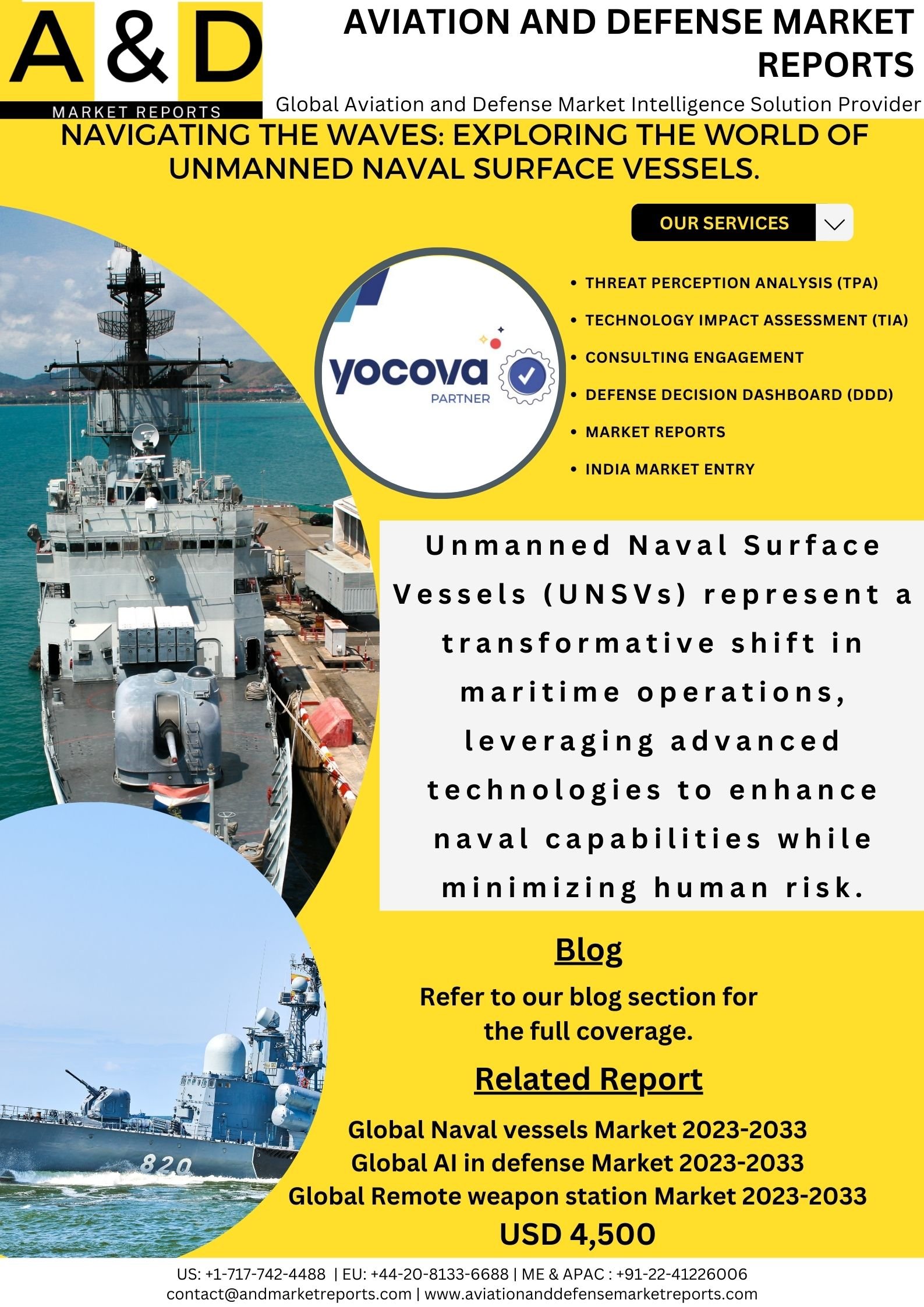Unmanned Naval Surface Vessels (USVs) are becoming more popular in naval and maritime technology. These vessels, also known as autonomous surface vessels (ASVs), are intended to operate on the water without the presence of a crew. They use a variety of technologies, such as artificial intelligence, sensors, communication systems, and advanced control systems, to complete their missions autonomously or remotely.
Surveillance and Reconnaissance: USVs can be used for surveillance missions, patrolling large areas for information gathering.
Mine Countermeasures: USVs outfitted with specialized sensors and tools can detect and neutralize mines. Some USVs are designed for anti-submarine warfare (ASW) missions, detecting and tracking submarines autonomously.
Anti-Piracy and Maritime Security: USVs can be used to patrol and secure maritime zones, responding to threats such as piracy and piracy. Advanced navigation systems enable USVs to navigate autonomously, avoiding obstacles and adapting to changing conditions.
Sensor Integration: For situational awareness, USVs are outfitted with a variety of sensors such as radar, sonar, cameras, and other data-gathering devices.
Communication Systems: Advanced communication systems allow for remote control or communication with other naval assets and command centers.
ADVANTAGES
Unmanned Naval Surface Vessels (USVs) provide several benefits, aiding in the evolution of naval operations and maritime capabilities.
Human lives are less at risk:
USVs can operate in hazardous environments without endangering human lives by eliminating the need for a human crew on board. This is especially useful in missions involving mine detection, anti-submarine warfare, and other high-risk scenarios.
Cost-Efficiency:
Unmanned vessels can be less expensive to operate and maintain than manned vessels. Crew facilities, life support systems, and accommodations are not required on USVs, resulting in lower operational costs over time.
Long-Term Endurance and Persistence:
USVs can operate for long periods without fatigue, allowing for longer mission durations. This endurance is especially useful for surveillance, reconnaissance, and patrol missions that require constant monitoring.
Adaptability and flexibility:
Without the constraints imposed by human crew needs, USVs can be designed and adapted for specific mission requirements. This adaptability enables the rapid deployment of vessels tailored to specific tasks such as mine clearance, anti-piracy operations, or intelligence gathering.
Autonomous mode of operation:
USV autonomy reduces the workload on human operators and allows for more efficient task execution. USVs can navigate autonomously, avoiding obstacles and adapting to dynamic maritime environments, thanks to advanced navigation systems, sensors, and artificial intelligence.
Stealth and reduced signature:
USVs can be built with lower acoustic, electromagnetic, and visual signatures, making them less detectable to potential adversaries. This makes them more suitable for covert operations and increases their survivability in contested environments.
Coordination of Operations Using Manned Assets:
USVs can augment manned naval assets by autonomously performing certain tasks, allowing manned vessels to focus on more complex or strategic missions. The integration of unmanned and manned systems has the potential to improve overall fleet effectiveness.
Continual Operations:
Unmanned vessels can operate continuously without crew rest or shift changes. This constant presence can be useful for maritime surveillance, monitoring, and response to emerging threats.
Reduced Infrastructure Needs:
USVs have simplified design requirements by eliminating the need for crew accommodations, mess facilities, and other human-related infrastructure, potentially making them more adaptable and easier to maintain.
Quick Deployment:
USVs can be quickly deployed for a variety of missions, allowing for a rapid response to emerging threats or changing situations.
CHALLENGES
While unmanned naval surface vessels (USVs) have numerous advantages, their development and deployment are fraught with difficulties.
The existing international maritime laws and regulations were designed primarily for manned vessels. The deployment of USVs raises concerns about legal accountability, engagement rules, and compliance with maritime laws, necessitating the creation of new regulatory frameworks.
It is a significant technical challenge to achieve reliable and safe autonomous navigation. USVs must be able to navigate complex and dynamic maritime environments, avoid hazards, and adapt to changing conditions.
The reliance on communication links for remote operations raises cybersecurity concerns. It is critical to ensure the security of these communication channels to prevent unauthorized access, tampering, or cyber-attacks that could jeopardize the vessel’s operations. While sensor technology has advanced, developing sensors that can fully replicate human perception capabilities remains a challenge. In certain scenarios, the USV’s ability to navigate, detect threats, and operate effectively may be hampered by limited sensor capabilities.
Coordination of operations involving both unmanned and manned naval assets necessitates careful planning and integration. It is critical for the success of joint operations to ensure seamless communication, interoperability, and a shared understanding of tactics and strategies. To operate in remote or hostile environments, USVs must demonstrate high levels of dependability. Furthermore, redundancy in critical systems is critical to preventing mission failure in the event of technical failures or system failures. Maritime environments can be unpredictable due to factors such as bad weather, rough seas, and erratic marine life.
Adversaries may use A2/AD strategies to deny access or disrupt unmanned system operations. Jamming communication signals, deploying anti-drone technologies, or using cyber means to disable or compromise USV operations are all examples of this. Unmanned military systems, including naval vessels, can be difficult to accept and publicize.
Concerns about job displacement, ethics, and potential misuse of technology may have an impact on public support for unmanned naval initiatives. Maintaining and repairing USVs is a logistical challenge, especially in remote or harsh environments. To ensure the longevity and dependability of unmanned vessels, effective maintenance procedures and capabilities must be established.
Recent Work:
- THUNDER ON THE HORIZON: EXPLORING THE EVOLUTION AND IMPACT OF MODERN ARTILLERY SYSTEMS
- SKYWARD HORIZONS: Navigating The Future With Personal Air Mobility
- ENHANCING DEFENSE CAPABILITIES: NAVIGATING THE FUTURE WITH AUGMENTED AND VIRTUAL REALITY
- DATA, DRONES, AND DECISIONS: THE TECH REVOLUTION IN C5ISR
- Commanding the Future: Exploring the Evolution of Battlefield Management Systems in Modern Warfare
